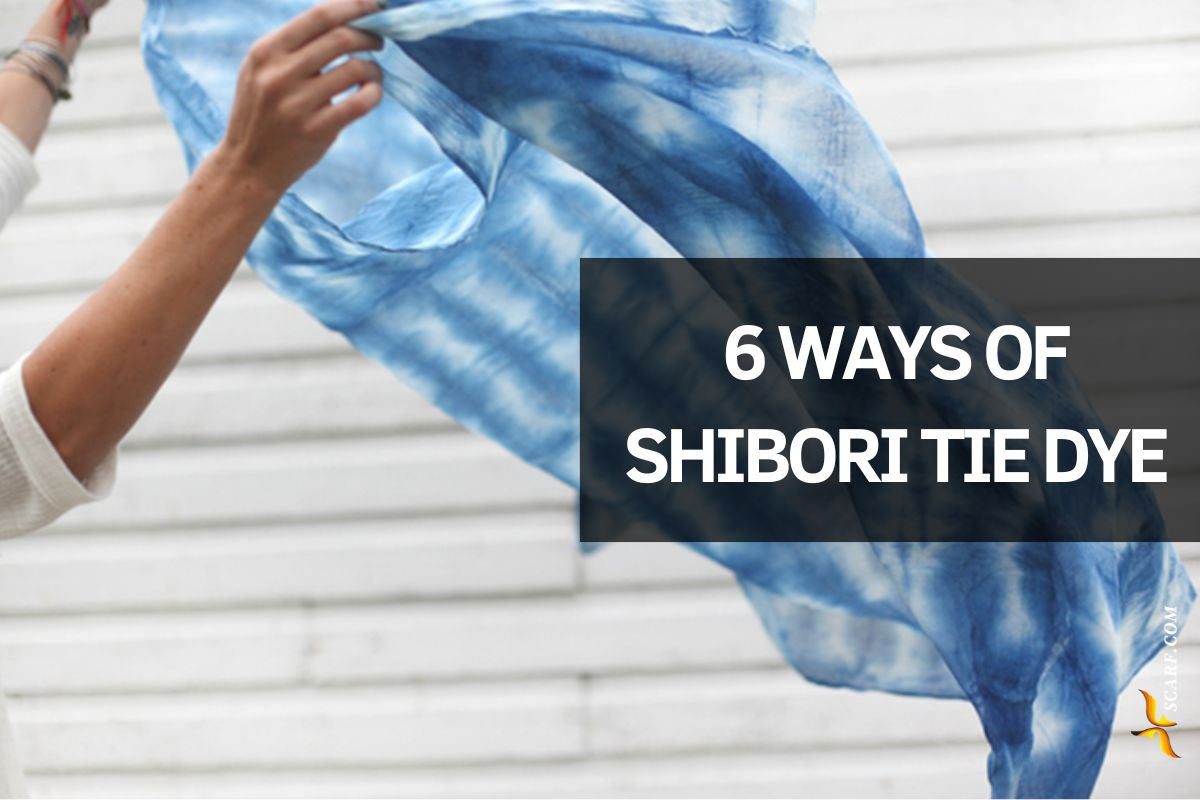Shibori tie dye is a highly flexible coloring method, is easy to do, pleasing to the eyes, and more versatile than you might think. Shibori dyeing allows you to create endless patterns by binding, folding, or wrapping fabric.
Shibori can be used to create custom-made hand-dyed fabric and pre-sewn clothing.
If you want to make a unique tie-dye shirt, let’s take a look together to learn 6 ways- how to tie dye shirts.
What is Shibori Tie Dye?
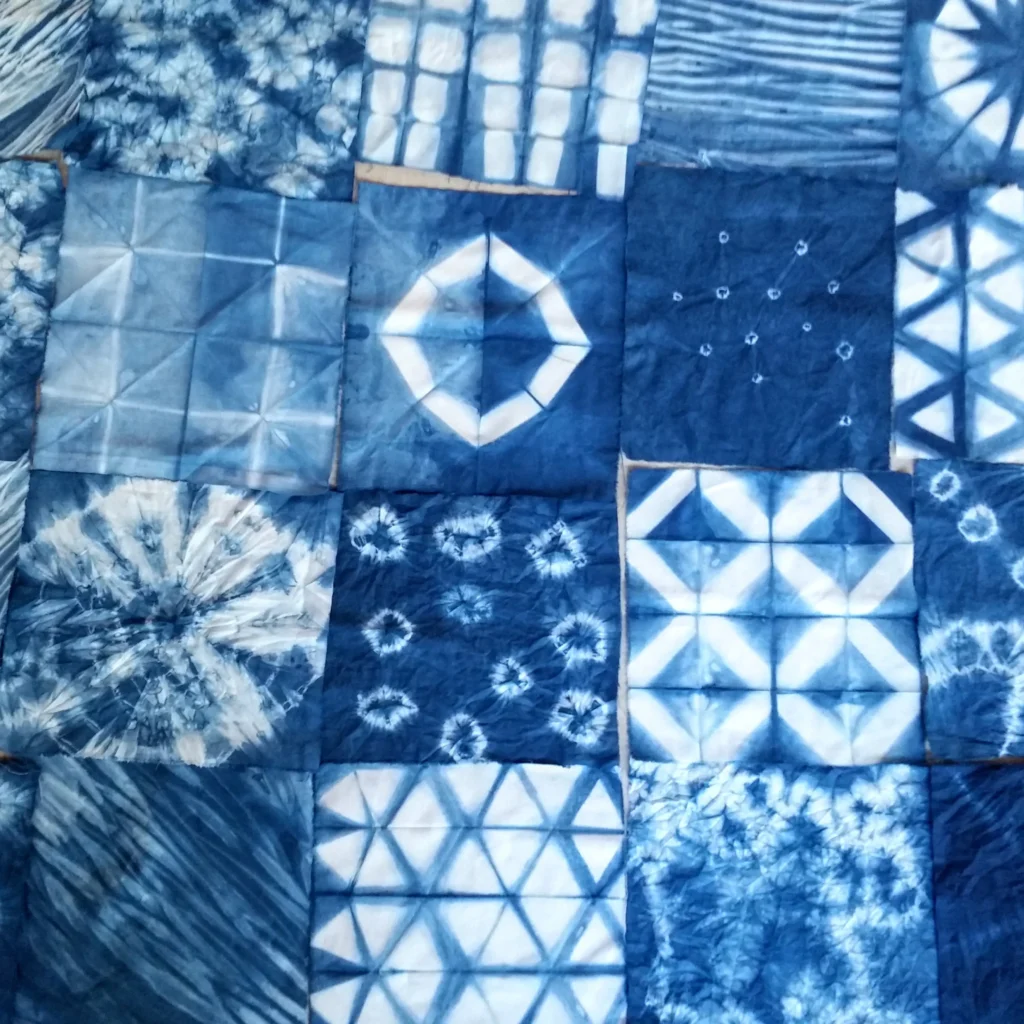

“Tie-Dye” is derived from China and “Shibori” is derived from the Japanese word “Shiboru” which means to squeeze or bind. In the context of home dyers and dye professionals, we are talking about binding up cloth using string, sinew or thread, solid-shaped objects and other household items.
Shibori dyeing is based on the way you fold, clamp, or bind the fabric prior to dipping it in a dye bath. It’s easiest to understand that, whatever you do, you are creating a resistance that prevents the dye from flowing evenly throughout the fabric.
In batik, you can create a resist by painting hot wax on a part of the fabric. In Shibori we make a resist in Shibori by tightly folding or tying up the fabric so that the dyes create patterns on the cloth.
6 ways to tie dye shibori patterns
Kumo
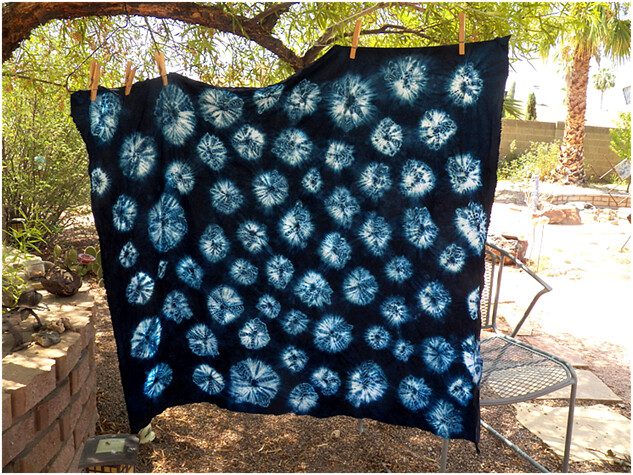

Kumo is translated as “cloud” in Japanese. This technique of pleats and binding produces a ringed pattern that looks like a spider.


When you tie the fabric tightly, it will have a lot of space because more fabric is being trapped in your fabric. The result of each tightly bound point after dyeing looks like a spiderweb.
Itajime Triangle


Itajime, or shape-resisting technique, produces geometric shapes such as triangles and squares.
Arashi
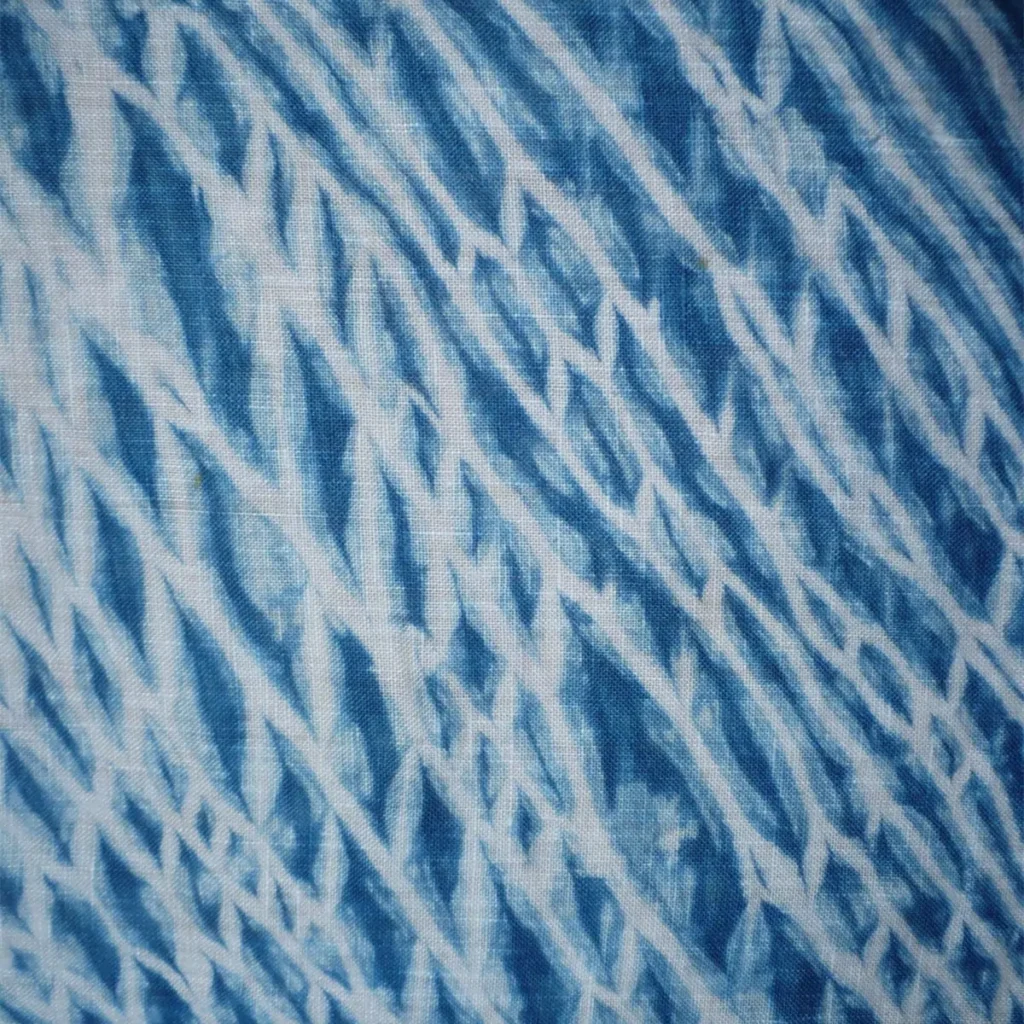

Arashi is translated as “storm” in Japanese. This technique of pole wrapping produces a pattern that is similar to stormy rain.
Kanoko Shibori
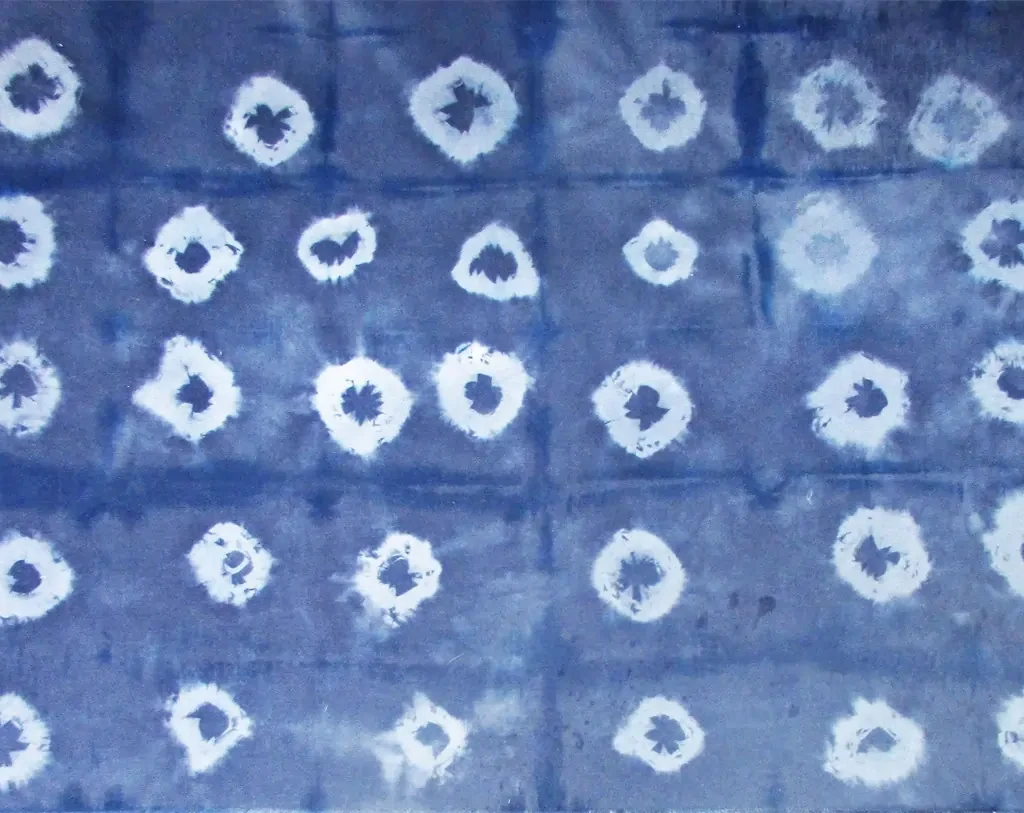

Kanoko, a Japanese term meaning “cloth dyed with a dappled design” or “patterns of dappled spots,” is similar to the spots found on a white fawn. Kanoko Shibori is fascinating, because it is so natural and simple to do!
You can make big circles or tiny circles. You can either cover the entire cloth with them or just place them in specific areas.
Nui Shibori
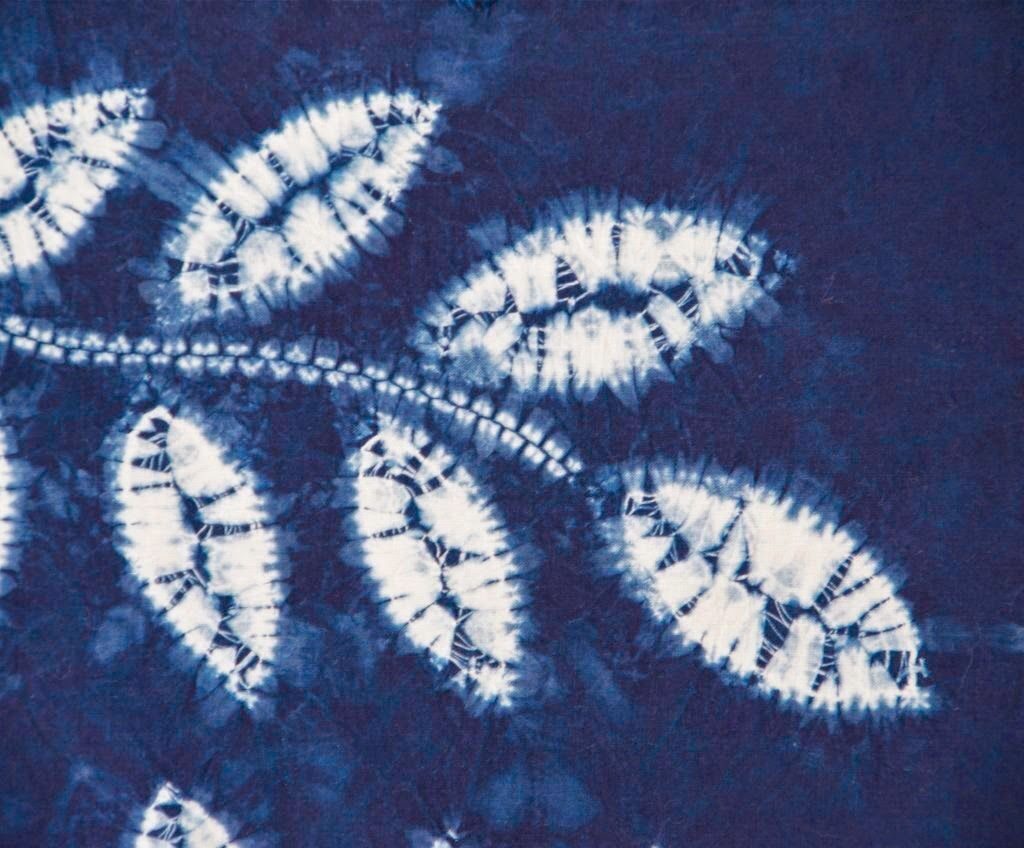

Nui is a Japanese word that means stitching, sewing, needle, etc. Nui Shibori or “stitched Shibori”, is fun, because you can create the resist in any shape you want on your cloth!
The fabric is cinched up tight with a row or stitches before it’s immersed in the dye bath. The resist is where the fabric has been pulled so tight that the dye could not penetrate the fibers.
Tip: trace patterns using a washable pen before you begin stitching. This will guide you when your fabric is puffed up.
Itajime Square
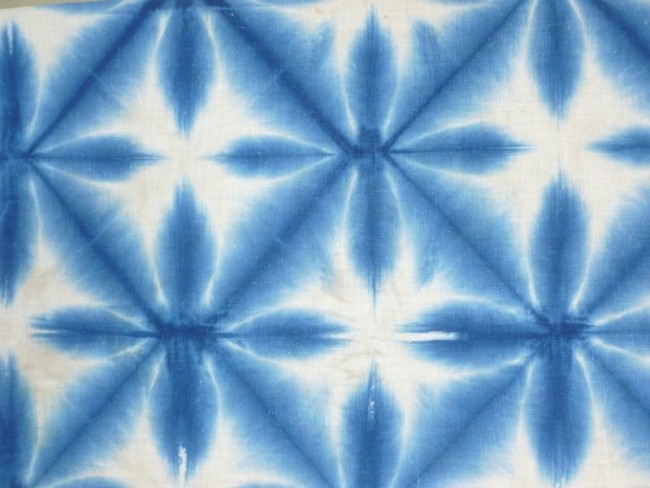

Itajime, or shape-resisting technique, produces geometric shapes such as triangles and squares. This tutorial shows how to create a square itajime pattern.
How to tie dye shirts with shibori?
Tie dye kit
Basic materials and tools include a bucket or tub for the dye bath (5 gallons is a good size), a white fabric made of a natural fiber (100% cotton is best), an indigo dye, such as Rit Dye All-Purpose Dye, long rubber gloves, scissors and a stainless-steel spoon for stirring. You can use rubber bands, twines, clamps or small balsa squares to resist dyeing. PVC pipes and marbles are also suitable for this technique. If you are dyeing linen or cotton, add salt. For wool or silk, use white vinegar.
How to tie dye?
Step 1 – Folding and Bundling
Different methods of folding and bundling will produce different tie dye effects. Follow the steps to get the desired effect.
The folding method is not explained here.
Step 2 – dyeing
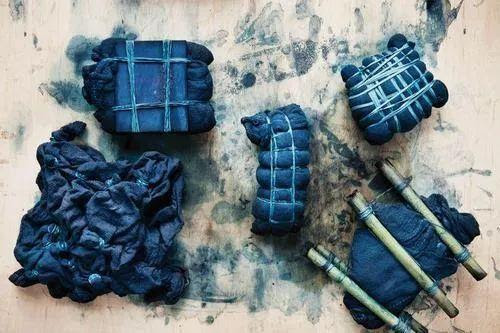

Wearing your plastic gloves, set your project down on the wire rack. Shibori is traditionally done with indigo dye. Mix your indigo/dark-blue dye and apply to the exposed fabric areas on both sides. Wrap your project in plastic wrap or place it into a plastic bag that can be sealed. This will keep the fabric damp until the dye has fully processed.
The amount of salt or vinegar will vary depending on the size of your dye bath. Use 1/4 cup salt or vinegar to dye a bath that is about one gallon. Add 1/2 cup of vinegar to a bath that is two gallons and add 1 cup of salt for three or more gallons. These additions will help the fabric absorb the dye.
If you have enough dye, you can also dip the shirt directly into the dye. wait for 5-20 mins.
Step 3 – Wash
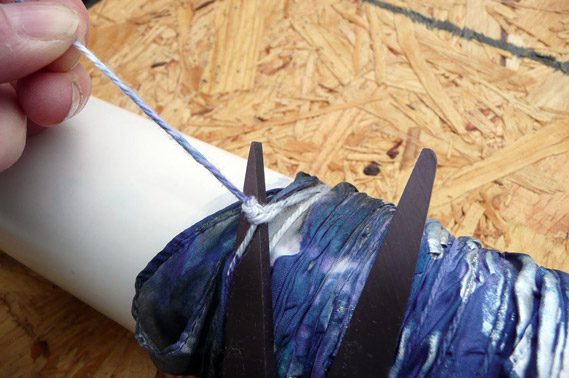

After the dye has completely processed, remove the rubber bands carefully and admire your shibori tie-dye! Rinse and wash.
Repeat the dyeing procedure if you wish after fabric has been dyed. Note: The more times you submerge a bundle of fabric into the dye bath the more saturated will the color be. Remember that fabric always looks darker when it is wet, and fades a little after the first wash. Untie the fabric bundles after they have dried completely. In the sink, rinse the fabric with lukewarm or warm water until it runs clear. To dry, hang the fabric.
Want to buy the fest fabric of shibori tie dye or other fabric? contact us, offer you the best fabric at the most cheap prices.
FAQ
How to get tie dye off skin?
Soap and Water: Wash the stained area with warm soapy water using a washcloth.
Exfoliation: Use a gentle exfoliating scrub or a paste of baking soda and water to scrub the dye off.
Oil: Apply baby oil, coconut oil, or olive oil to the stain, let it sit for a few minutes, then wipe off.
Nail Polish Remover: If the stain persists, gently use nail polish remover or rubbing alcohol on a cotton ball, then wash off immediately.
How to wash tie dye?
- Initial Rinse: Rinse the dyed fabric in cold water until the water runs clear.
- Set the Dye: Soak in a mixture of equal parts white vinegar and cold water for 30 minutes.
- Wash Alone: Wash the item separately in cold water using a gentle cycle.
- Use Mild Detergent: Add a small amount of mild detergent.
- Avoid Bleach: Do not use bleach or fabric softeners.
- Dry Carefully: Air dry or use a low heat setting in the dryer.
This helps preserve the vibrant colors and prevents bleeding.
What is the best fabric for shibori dyeing?
The best fabric for shibori dyeing is natural fibers due to their absorbency and ability to hold dye well. Cotton, linen, silk, and wool are ideal choices. Cotton is particularly popular for its affordability and ease of use, while silk yields vibrant colors and intricate patterns. Linen provides a textured finish, and wool offers warmth and softness. Avoid synthetic fabrics, as they typically do not absorb dye effectively.
What is the makiage technique for shibori?
The makiage technique for shibori involves intricate binding and stitching to create detailed patterns:
- Draw Design: Sketch your pattern on the fabric.
- Stitching: Use a needle and thread to stitch along the drawn lines.
- Binding: Pull the thread tightly to gather the fabric, creating pleats.
- Wrap: Wrap sections of the gathered fabric with thread or string to secure the pleats.
- Dyeing: Submerge the fabric in dye.
- Unwrap and Rinse: Remove bindings after dyeing, rinse, and dry the fabric.
What other technique is shibori similar to?
Shibori is similar to tie-dye. Both techniques involve folding, twisting, or tying fabric to create patterns and then dyeing the fabric. The key similarities include the use of resist methods to create designs and the application of dye to produce colorful patterns. While tie-dye is more commonly associated with vibrant, psychedelic patterns, shibori often results in more intricate, geometric designs and traditionally uses indigo dye.
What is the best thread for shibori?
The best thread for shibori is strong, durable, and able to withstand the tension of gathering and binding the fabric. Polyester or cotton-wrapped polyester thread is ideal due to its strength and resistance to breaking. Additionally, heavy-duty cotton thread can be used, but it should be robust enough to handle the binding process without snapping. Avoid using silk or delicate threads, as they may not hold up during the dyeing process.
Is shibori easy?
Shibori can be easy or challenging, depending on the complexity of the patterns you want to create. Basic techniques, like tying simple knots or folding fabric, are straightforward and accessible for beginners. However, more intricate methods, such as pole-wrapping or stitched shibori, require practice and precision.

